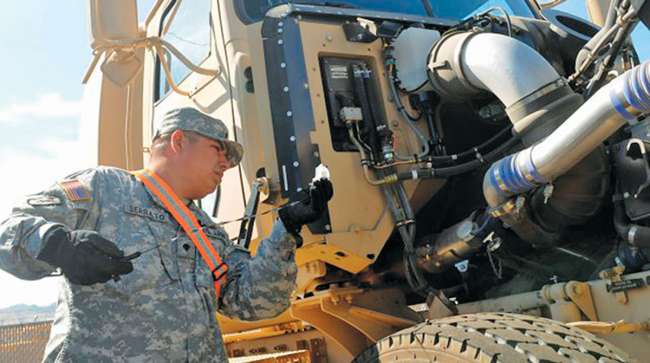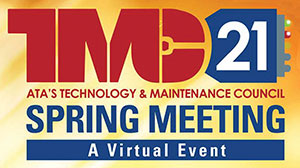Senior Reporter
Looking to Hire a ‘Fresh-Faced Veteran’ Maintenance Tech? Good Luck

[Stay on top of transportation news: Get TTNews in your inbox.]
Recruiting military veterans for maintenance positions in trucking fleets’ repair shops is an oft-discussed industry goal, but the prospect of finding and transitioning young vets to become civilian service technicians can be challenging, a top veterans official with the U.S. Department of Labor said.
“You’re not going to get a fresh-faced veteran on your doorstep unless you work hard for it,” Mark Toal, director of the Office of Strategic Outreach at the DOL Veterans’ Employment and Training Service, said during an April 14 virtual session at the spring meeting of the Technology & Maintenance Council of American Trucking Associations. The meeting was the third held by a task force that’s part of TMC’s broader Fleet Maintenance Management study group, noted task force chair Kirt Weaver.
“We’re exploring the different ways to connect your company with veteran applicants,” he said. “And as a veteran myself, I’ll say — more importantly — connecting our veterans with high-quality jobs that your different companies have to offer.”

Also at TMC 2021
The task force has been exploring how to recruit veterans — specifically those who can transition from being a military truck technician to working on commercial trucks — but has yet to draw up a position paper on the subject, Weaver said.
The DOL employment service offers transitioning advice, training and placement services to help veterans connect with employers — and employers find vets they are seeking to hire — at 2,400 job centers. But Toal noted that while the number of vets in the workforce has been declining, their unemployment rates consistently remain lower than nonveterans.
“You can almost come to the conclusion that employers valued their veteran employees during this time of [the COVID] crisis,” he said. “Veterans only represent 5.7% of those in the workplace right now, which is the lowest since World War II.”
Toal, who served for 28 years with the U.S. Marines, also noted that veterans are an aging segment of the workforce.
“The median age for veterans is 64 years old,” he said. “Less than half are actually in the workforce — 48%, or 8.6 million.”
He added, “If you were an 18-year-old Vietnam veteran in the Tet Offensive in 1968, you’re now 71 years old. I say this because most employers I talk to, they want fresh-faced veterans who just got out of the service. They want the young ones.”
There have been similar challenges to find 18- to 20-year-old military drivers for a Federal Motor Carrier Safety Administration pilot program that began last summer to mitigate the driver shortage.

Toal
“We are struggling in trying to get drivers,” then-Deputy FMCSA Administrator Wiley Deck said in an October agency briefing. “We’ve engaged the National Guard, the Reserves, even gone out to speak to large classes of drivers being trained at various facilities around the country. But we just haven’t made any headway on it.”
Toal said that a 2019 Pew research study showed that the average median wage of a veteran family household is 17% higher than a nonveteran household, suggesting they make good employees for the private sector.
“We try to connect you with resources,” Toal said. “We give you the tools to fish, but at the end of the day, you got to do the fishing. But we’re going to set you up with the different lures, and the different ponds where you can fish for vets.”
But the payoff can be large.
Toal added, “The investment and time and the energy to hire veterans is proven time and time again by several studies that veterans outperform their nonveteran peers in the workplace.”
Want more news? Listen to today's daily briefing below or go here for more info:

